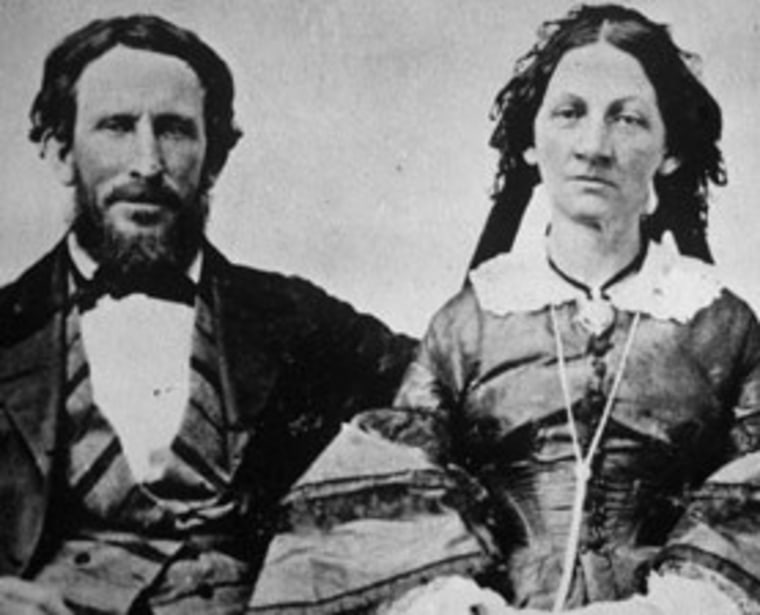The Donner Party, a group of 19th century American pioneers who became snowbound in the Sierra Nevada and supposedly resorted to cannibalism, may not have eaten each other after all, suggests a new study on bones found at the group's Alder Creek campsite hearth in California.
Detailed analysis of the bones instead found that the 84 Donner Party members consumed a family dog, "Uno," along with cattle, deer and horses. Cattle, likely eaten after the animals themselves died of starvation, appear to have been their mainstay.
The study is the first to show that the Donner members successfully hunted deer, despite the approximately 30 feet of snow on the ground during the winter of 1846-1847. The horses are thought to have come from relief parties that arrived in February and could have left a few of their animals behind.
The paper, which will be published in the July issue of the journal American Antiquity, is also the first to prove the theory that the stranded individuals ate their pet dog.
"They were boiling hides, chewing on leather and trying desperately to survive," project leader Gwen Robbins told Discovery News. "We can see that the bones were processed so heavily — boiled and crushed down in order to extract any kind of nutrients from them."
Robbins, an assistant professor of biological anthropology at Appalachian State University, and her team produced thin sections from the hearth bones and examined them under high magnification in order to measure each basic structural unit and link the bones to particular animals.
No human bones were identified.
"What we have demonstrated is that there is no evidence for cannibalism," said Robbins. "If the Donner Party did resort to cannibalism, the bones were treated in a different way (such as buried), or they were placed on the hearth last and could have since eroded."
Victorian Era journalists, who embellished the accounts provided by the 47 survivors, largely fueled the legend of the Donner Party cannibalism. The survivors, 11 men and 36 women and children, fiercely denied the allegations. Although one man, Lewis Keseberg, filed and won a defamation suit, he was still forever known as Keseberg the Cannibal.
"Racism might have played a part," Robbins said. "Keseberg was from Poland, and negative sentiment toward Polish immigrants existed then."
The trash and debris left around the Donner Party hearth in the spring of 1847 show that, in spite of their very difficult circumstances, the members tried to maintain a sense of decorum and normalcy.
"Slates suggest they had the children sitting and doing their lessons, while shards of china indicate they were eating off of plates, retaining some dignity and hoping for the future," Robbins explained.
University of Montana anthropologist Kelly Dixon worked on the initial study that first documented the hearth and bones.
"The tale of the Donner Party has focused on the tragedy of survival cannibalism," said Dixon, "yet the archaeological remains inspire us to consider more significant implications, such as what it was like to be human, doing whatever possible to survive in one of the snowbound camps."
Robbins and her colleagues are currently writing a book about the Donner Party for the University of Oklahoma Press. It is scheduled for release next year.
